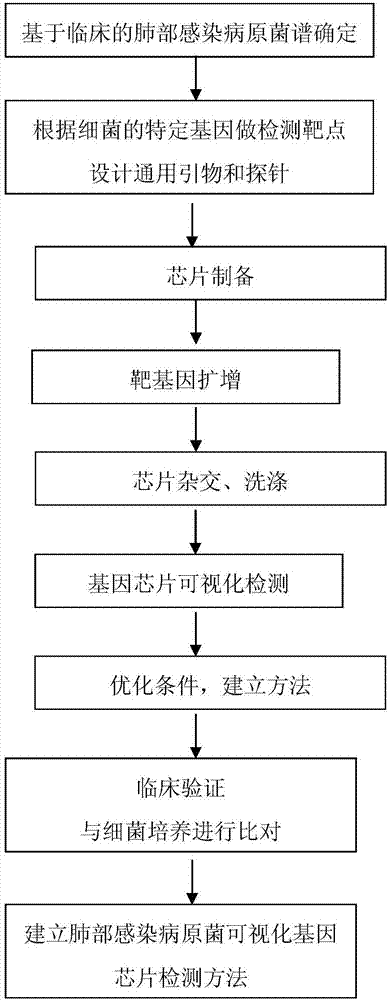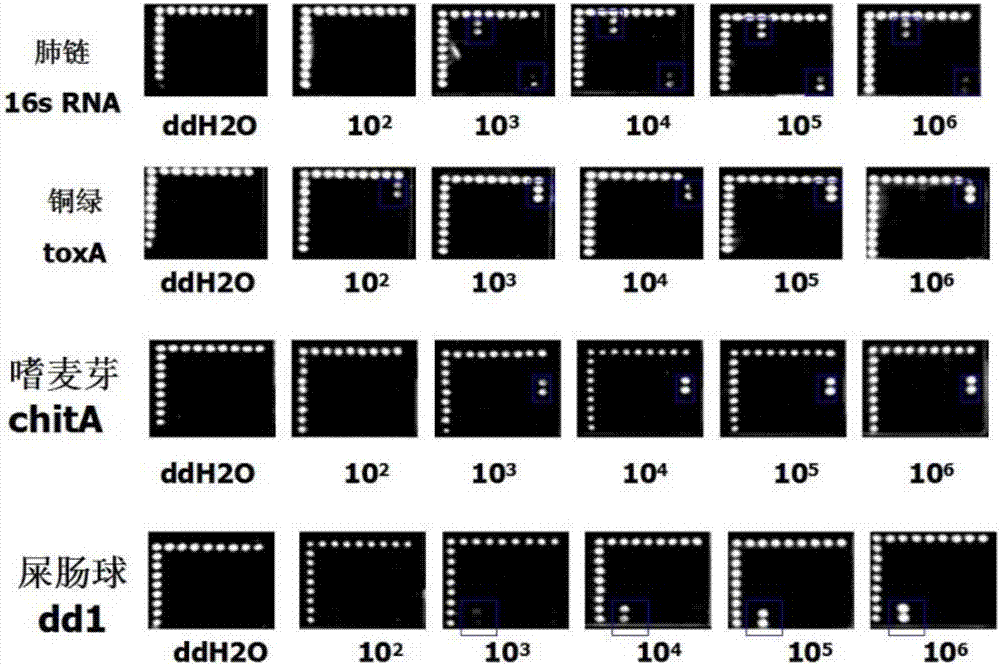Method for detecting lung infection pathogenic bacteria by adopting visual gene chip
A lung infection and gene chip technology, applied in the field of biomedicine, can solve problems such as low signal strength, limit the application and promotion of gene chips, affect the uniformity of detection signals and experimental reproducibility, and achieve the effect of high-throughput detection
- Summary
- Abstract
- Description
- Claims
- Application Information
AI Technical Summary
Problems solved by technology
Method used
Image
Examples
Embodiment Construction
[0032] The following will clearly and completely describe the technical solutions in the embodiments of the present invention with reference to the accompanying drawings in the embodiments of the present invention. Obviously, the described embodiments are only some, not all, embodiments of the present invention. All other embodiments obtained by persons of ordinary skill in the art based on the embodiments of the present invention belong to the protection scope of the present invention.
[0033] Such as figure 2 As shown, the visualized gene chip described in the embodiment of the present invention detects the method for pathogenic bacteria of pulmonary infection comprising the following steps:
[0034] S1 Among the pathogenic bacteria of 300 patients with lung infection in recent years, 10 common pathogenic bacteria were selected as the target bacteria for detection through statistics and analysis;
[0035] S2 Design of universal primers and specific probes: take the 10 kinds...
PUM
 Login to View More
Login to View More Abstract
Description
Claims
Application Information
 Login to View More
Login to View More - R&D
- Intellectual Property
- Life Sciences
- Materials
- Tech Scout
- Unparalleled Data Quality
- Higher Quality Content
- 60% Fewer Hallucinations
Browse by: Latest US Patents, China's latest patents, Technical Efficacy Thesaurus, Application Domain, Technology Topic, Popular Technical Reports.
© 2025 PatSnap. All rights reserved.Legal|Privacy policy|Modern Slavery Act Transparency Statement|Sitemap|About US| Contact US: help@patsnap.com



